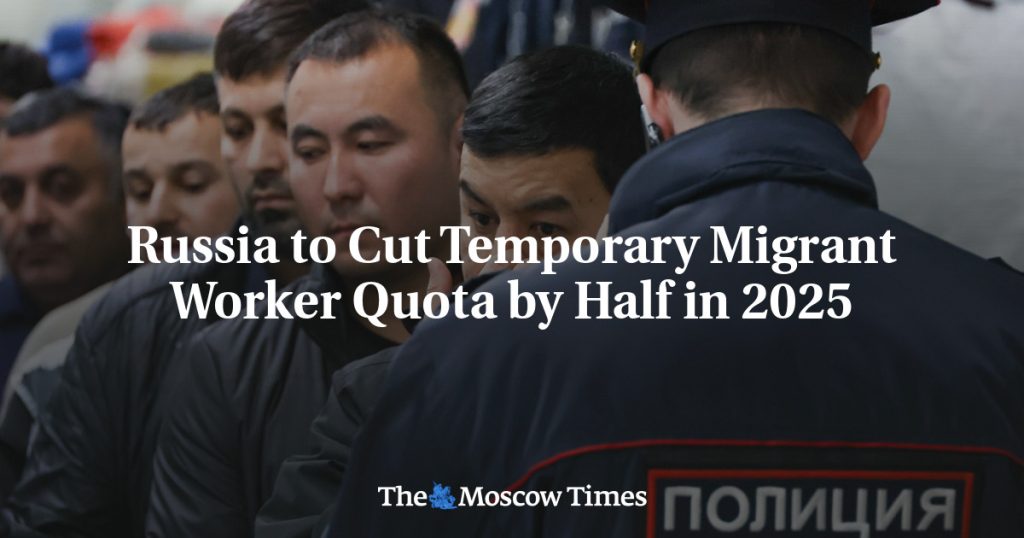Russia has approved plans to significantly reduce the country’s temporary migrant worker quota by almost half in 2025, according to a report by the state-run TASS news agency. The government document obtained by TASS outlines a decrease in next year’s quota to 5,500 migrants, compared to this year’s quota of 10,595. These permits allow foreign citizens to temporarily reside and work in Russia for up to three years without the option for an extension.
The largest quotas for temporary migrant workers are typically allocated to Moscow and the surrounding Moscow region, but in 2025, they will only be able to accept 1,000 and 350 workers, respectively, down from 1,500 and 750 this year. St. Petersburg will also experience a reduction from 300 to 200 permits, while the republics of Tatarstan and Bashkortostan will only receive 100 permits each, despite having 500 permits in previous years.
Following a deadly attack on a Moscow concert hall in March, Russian authorities have taken a stricter stance on immigration, particularly from Central Asian countries. The gradual decrease in the temporary migrant worker quota over the past five years reflects this trend. In 2023, the quota was 13,500, while the year before saw 19,000 permits issued. Despite these quotas, authorities have struggled to meet them, with only 20.4% of the quota being fulfilled so far this year.
The Interior Ministry of Russia reported that the number of migrants in the country had decreased from 8.5 million in the previous year to 6.1 million as of September 2023. This decline may be attributed to the stricter enforcement of immigration policies and the reduction in quotas for temporary migrant workers. The government’s efforts to limit the number of foreigners working and residing in Russia align with broader concerns about national security and public safety.
While the reduction in the temporary migrant worker quota may impact industries that rely on foreign labor, it reflects Russia’s efforts to prioritize the employment of its citizens. By decreasing the influx of temporary workers, the government aims to create job opportunities for local residents and reduce competition in the labor market. However, critics argue that such measures could have negative consequences for sectors that heavily depend on migrant labor, such as construction and agriculture.
The ongoing debate over immigration policy in Russia highlights the complex challenges faced by the government in balancing national security concerns with economic considerations. As the country continues to grapple with issues related to migration and labor force dynamics, policymakers must strike a delicate balance between protecting domestic interests and maintaining a diverse workforce. The future trajectory of Russia’s immigration policies will likely be influenced by broader geopolitical developments and domestic socioeconomic factors.


